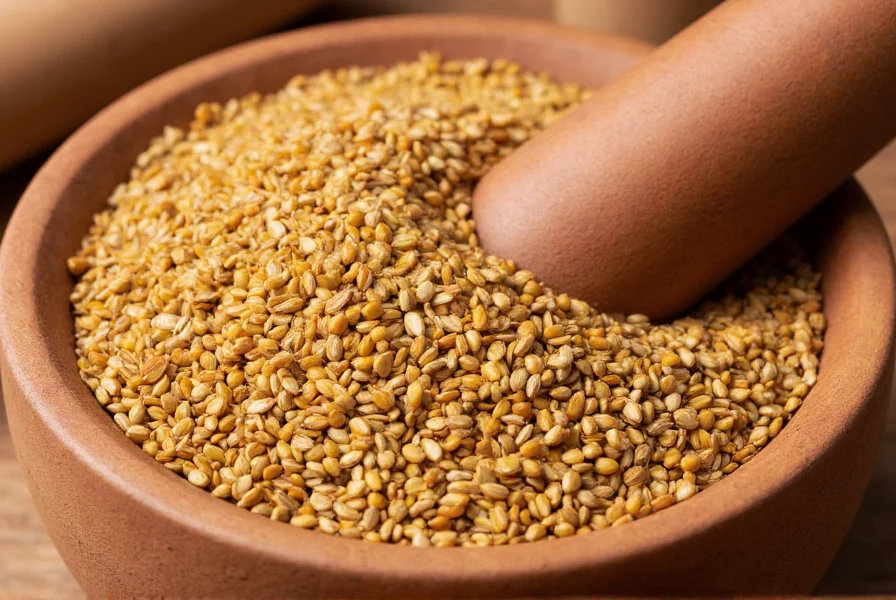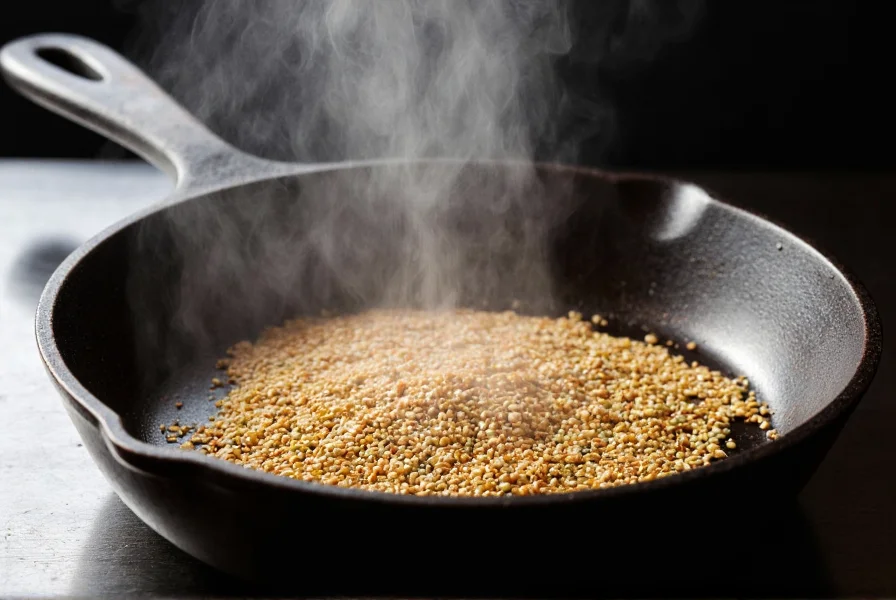Understanding what coriander seeds are used for requires exploring their multifaceted applications across culinary, medicinal, and household contexts. These small, round seeds from the Coriandrum sativum plant have been valued for thousands of years across diverse cultures for more than just their distinctive flavor.
Culinary Applications of Coriander Seeds
Coriander seeds serve as a foundational spice in numerous global cuisines. When toasted and ground, they develop a warm, nutty flavor with citrus undertones that enhances a wide range of dishes. Professional chefs and home cooks alike rely on coriander seeds for their ability to balance flavors and add complexity to recipes.
One of the most common questions—what are coriander seeds used for in cooking—has several answers. In Indian cuisine, they're essential in curry powders and garam masala blends. Middle Eastern recipes frequently incorporate them into falafel and za'atar mixes. European bakers use them in rye breads and pickling spice blends. The versatility of coriander seeds makes them indispensable in spice cabinets worldwide.

Whole vs. Ground: Maximizing Flavor Potential
Understanding how to use coriander seeds properly affects their flavor impact. Whole seeds maintain their potency for up to a year when stored properly, while ground coriander loses flavor within 3-6 months. For maximum flavor, many chefs recommend dry-toasting whole seeds in a skillet before grinding—a technique that significantly enhances their aromatic properties.
When exploring how to use coriander seeds in recipes, consider these applications:
| Application | Recommended Form | Flavor Contribution |
|---|---|---|
| Curry bases | Ground | Earthy foundation with citrus notes |
| Pickling liquids | Whole | Subtle citrus aroma without bitterness |
| Bread doughs | Lightly crushed | Warm, nutty accents |
| Marinades | Ground | Flavor carrier that tenderizes proteins |
Traditional Medicinal Uses and Health Benefits
Beyond their culinary value, coriander seeds have been used for centuries in traditional medicine systems. Research supports several health benefits of coriander seeds, particularly regarding digestive health. The seeds contain compounds that may help reduce bloating, gas, and indigestion when consumed as a tea or infusion.
Studies suggest coriander seeds may help regulate blood sugar levels and possess antioxidant properties. However, it's important to note that while traditional uses are well-documented, scientific evidence for many health claims remains preliminary. As with any natural remedy, coriander seeds should complement—not replace—professional medical advice.
Practical Household Applications
Less commonly known traditional uses of coriander seeds extend beyond cooking and medicine. In some cultures, they serve as natural insect repellents when placed in storage areas. The essential oils in coriander seeds have properties that deter certain pests without harsh chemicals.
Additionally, coriander seed oil finds applications in natural skincare formulations. Its anti-inflammatory properties make it suitable for sensitive skin, while its antimicrobial qualities help maintain skin health. Many natural beauty enthusiasts incorporate coriander seed extracts into facial toners and creams.

Coriander Seeds vs. Cilantro: Clarifying the Confusion
A frequent point of confusion involves coriander seeds vs cilantro. While both come from the same plant (Coriandrum sativum), they offer completely different flavor profiles and culinary applications. Cilantro refers to the fresh leaves and stems, which have a bright, citrusy flavor that many describe as soapy (due to a genetic predisposition).
Coriander seeds, by contrast, develop after the plant flowers and produces fruit. They have a warm, nutty, slightly citrus flavor that becomes more complex when toasted. Understanding this distinction is crucial when following recipes from different cultural traditions, as terminology varies globally.
Storage and Preparation Tips
Proper storage significantly impacts how to store coriander seeds for maximum shelf life. Keep whole seeds in an airtight container away from light and heat. Stored properly, they maintain optimal flavor for 12-18 months. For extended freshness, consider refrigerating or freezing your spice collection.
When preparing coriander seeds for use, toasting enhances their flavor profile. Heat a dry skillet over medium heat, add seeds, and toast for 1-2 minutes until fragrant. Be careful not to burn them, as this creates bitterness. Allow to cool before grinding for optimal flavor release in your dishes.
Common Substitutions and Pairings
When coriander seeds aren't available, certain spices can approximate their flavor profile. Caraway seeds offer a similar earthy quality, though with more anise notes. Cumin provides earthiness but lacks the citrus component. For the most authentic flavor, however, nothing truly replaces coriander seeds in traditional recipes that specifically call for them.
Coriander seeds pair exceptionally well with other warm spices like cumin, turmeric, and cardamom. They also complement citrus flavors, making them ideal for marinades featuring lemon or orange. Understanding these flavor relationships helps home cooks create balanced, professional-quality dishes.
Frequently Asked Questions
What are the primary culinary uses for coriander seeds?
Coriander seeds are primarily used in spice blends for curries, soups, stews, and baked goods. They're essential in Indian, Middle Eastern, and European cuisines, often toasted to enhance their warm, citrusy flavor before being ground or used whole in pickling and braising liquids.
Can coriander seeds help with digestion?
Yes, traditional medicine systems have used coriander seeds for digestive support for centuries. Modern research suggests compounds in coriander seeds may help reduce bloating and gas. Many people prepare coriander seed tea by steeping crushed seeds in hot water for 10-15 minutes to aid digestion after meals.
How do I properly store coriander seeds to maintain freshness?
Store whole coriander seeds in an airtight container away from light, heat, and moisture. Properly stored in a cool, dark cupboard, they maintain optimal flavor for 12-18 months. For extended freshness, refrigerate or freeze your seeds, which can preserve their potency for up to two years.
What's the difference between coriander seeds and cilantro?
Coriander seeds come from the dried fruit of the coriander plant, while cilantro refers to the fresh leaves and stems. They have completely different flavor profiles—seeds are warm, nutty, and citrusy, while cilantro leaves are bright and citrusy (with some people perceiving a soapy taste). Both come from the same plant but serve distinct culinary purposes.
Can I substitute ground coriander for whole seeds in recipes?
Yes, but with flavor considerations. Use 3/4 teaspoon ground coriander for every 1 teaspoon of whole seeds called for in a recipe. However, whole seeds toasted and freshly ground provide superior flavor. Ground coriander loses potency faster, so recipes specifically calling for whole seeds (like pickling) work best with the whole form.











 浙公网安备
33010002000092号
浙公网安备
33010002000092号 浙B2-20120091-4
浙B2-20120091-4